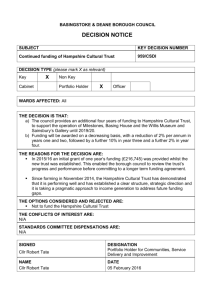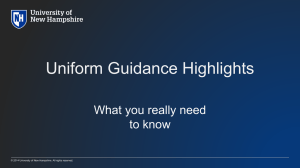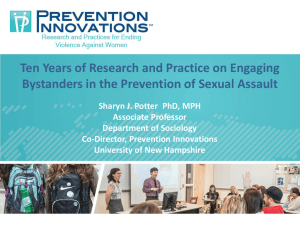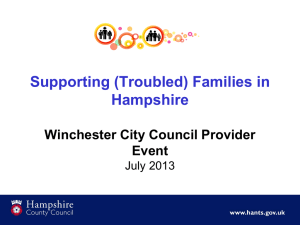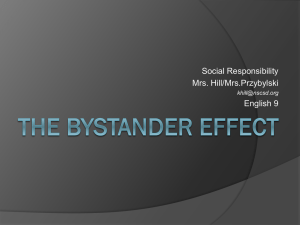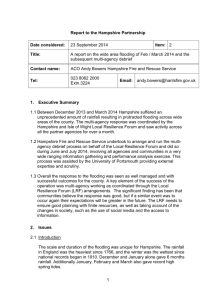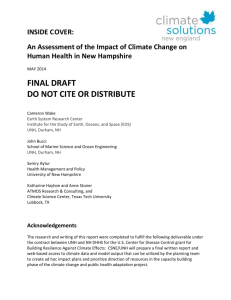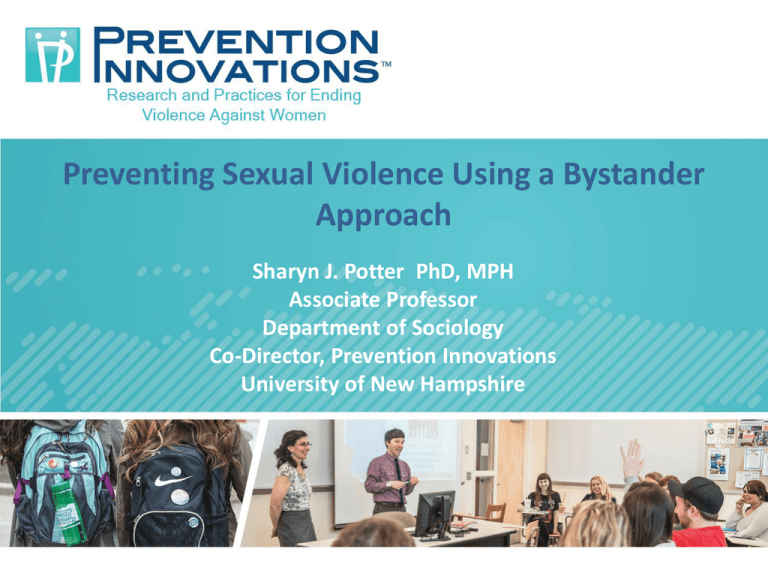
Preventing Sexual Violence Using a Bystander
Approach
Sharyn J. Potter PhD, MPH
Associate Professor
Department of Sociology
Co-Director, Prevention Innovations
University of New Hampshire
Rape on US University Campuses*
• Public Health Issue
• Economic Issue
• Community Issue
* Over 25 years of incidence and prevalence studies beginning
with research by Koss, Gidycz and Wisiewski published in 1987.
© 2014 University of New Hampshire. All Rights Reserved.
Hypothetical Dear Parent Letter
USA UNIVERSITY
August 3, 2014
Dear Parent of Incoming Male
Student,
We regret to inform you that your son
has a 1 in 5 chance of being held up at
gun point.
We regret there is nothing that can be
done…
Sincerely,
John Smith
President
USA University
© 2014 University of New Hampshire. All Rights Reserved.
3
Recent U.S. Legislation to Address
Sexual Violence on University and
College Campuses
• 2011 Amendments to Title IX, Dear
Colleague Letter
• Campus saVE Act
• White House Task Force to Prevent
Students from Sexual Assault, Not Alone
© 2014 University of New Hampshire. All Rights Reserved.
A Bystander Approach
© 2014 University of New Hampshire. All Rights Reserved.
5
The Bringing in the Bystander®
In-Person Prevention Program
A Prevention Workshop for Establishing a
Community of Responsibility
• In-Person Program (2 versions)
• Longer version: 2- or 3- Session Program (4.5
hours)
• Shorter version: Single-session Program (90
minutes)
© 2014 University of New Hampshire. All Rights Reserved.
6
The Know Your Power®Bystander
Social Marketing Campaign
• The only bystander sexual violence prevention social marketing campaign
that has been evaluated in both a college and military setting.
• Targeted images and collateral product that raises awareness about the
problem of sexual and relationship violence and stalking.
• The campaign images model active bystander behaviors that target
audience members can use.
© 2014 University of New Hampshire. All Rights Reserved.
7
Developing Effective Prevention
Strategies
Lessons from the development, dissemination
and evaluation of the Know Your Power
Bystander Social Marketing Campaign.
© 2014 University of New Hampshire. All Rights Reserved.
8
Engage the Target Audience
© 2014 University of New Hampshire. All Rights Reserved.
Specific Lessons
Social Self-Identification
© 2014 University of New Hampshire. All Rights Reserved.
10
Focus Group Exercise
Example of an Individual Response
© 2014 University of New Hampshire. All Rights Reserved.
Example of Campaign Administration and
Evaluation
Copyright
13
Example of Centers for Disease Control
(CDC) Funded Study
Comprehensive social marketing campaign at UNH for six
week period
-Pretest/Posttest
11 x 17 Posters posted throughout campus and town
Campus bus King Kong wraps
Distribution of product to all first year students
Bookmarks/Table Tents in dining halls
Computer clusters
© 2014 University of New Hampshire. All Rights Reserved
© 2014 University of New Hampshire. All Rights Reserved.
How Do We Know It Works?
•
•
•
•
Formative Evaluation
Pretest
Posttest
Follow-up
© 2014 University of New Hampshire. All Rights Reserved
22
Know Your Power Bystander Social Marketing Campaign
Evaluation Results from 5 Campus Studies
• Social marketing changes attitudes.
• Changes in attitudes and behavior between
pretest and posttest times.
• Importance of social self-identification.
• Dose matters (intentional & time limited).
• Effects maintained 5 weeks following
end of exposure.
• No backlash effect.
Need Different Strategies
• One prevention dosage will not end
perpetration and victimization.
© 2014 University of New Hampshire. All Rights Reserved
24
Education Needs to Begin Before
Students Enter College and University
© 2014 University of New Hampshire. All Rights Reserved
25
Difficult Culture to Disseminate
Prevention Messages
© 2014 University of New Hampshire. All Rights Reserved
26
Thank You.
Please contact me with any questions…
Sharyn.Potter@unh.edu
Sharyn J. Potter PhD, MPH
Associate Professor
Department of Sociology
Co-Director, Prevention Innovations
University of New Hampshire

